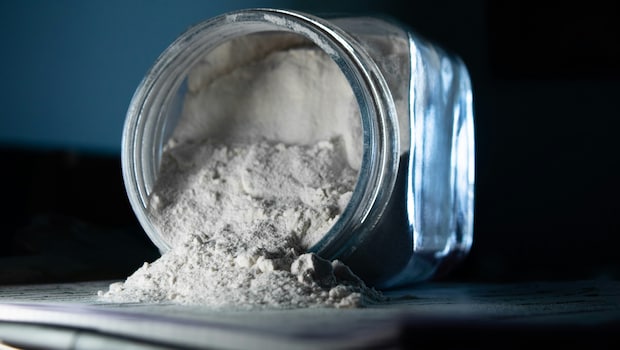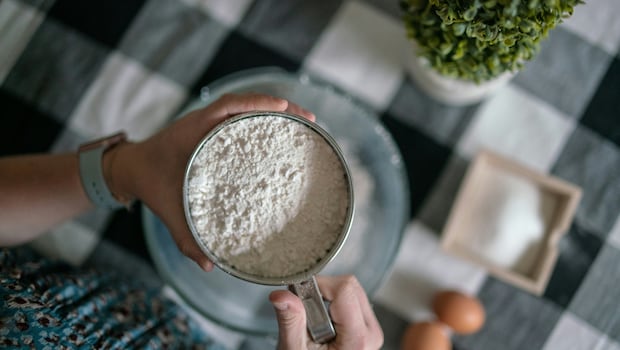Maida, also known as refined wheat flour, has long been the subject of kitchen debates and social media warnings. Some call it 'the unhealthiest flour,' while others blame it for digestive issues, weight gain and even chronic illnesses. But how much of this is actually true? While maida is highly refined and low in fibre compared to whole wheat, it may not be the dietary villain it is often made out to be. So why has it earned such a bad reputation? Could the real issue be not maida itself, but how we consume it or what we pair it with? These are questions worth asking before blaming this common flour for every digestive problem or extra pounds. Below, we'll share 6 myths about maida that you should put to rest.
Also Read: Baking Without Maida? Simple Tips, Smart Swaps, And How To Get Perfect Texture Every Time

Photo Credit: Unsplash
Here Are 6 Common Myths About Maida You Should Stop Believing:
1. Maida Sticks To Your Stomach
One of the most common myths about maida is that it sticks to your stomach. However, this is not true. According to nutritionist Amita Gadre, unlike popular belief, maida does not stick to our gut. Explaining her stance, Gadre says that this is because we do not consume maida in its raw flour form but cook it as puris or other food items. Moreover, the maida-based food we consume is chewed and transferred to our digestive system, which has enzymes.
2. Maida Is Completely Unhealthy
Many people think maida is harmful to health because it is refined and lacks fibre. While it is true that maida is more processed than whole wheat, it is not toxic or inherently dangerous. Consuming it occasionally in dishes like cakes, pastries, naan or parathas is perfectly safe. The key is balance, and combining maida-based foods with fibre-rich vegetables, legumes or whole grains helps create a nutritious meal without compromising health.
3. Maida Makes You Gain Weight Instantly
Weight gain is caused by an overall imbalance between calories consumed and calories burned, not by a single ingredient. Maida-based foods such as pizza, bread or sweets are calorie-dense, but enjoying them occasionally will not make you gain weight overnight. The real issue is frequent overconsumption or combining maida with other high-calorie foods. When eaten in moderation alongside a balanced diet, maida does not automatically lead to weight gain.
4. Maida Is Bad For Digestion
Another common myth is that maida is tough on the stomach because it is low in fibre. It is true that maida can sometimes feel heavy and slow to digest, which may cause bloating or discomfort for some people. However, it does not cause digestive problems for everyone. Pairing maida with fibre-rich foods can help it digest more easily and make meals lighter and more balanced. So next time you enjoy a slice of cake or a plate of momos, don't worry too much about it.
5. Maida Is Artificial
There is a common misconception that maida is synthetic because it is refined. In reality, maida is made by milling wheat grains and removing the bran and germ. It is completely natural and not chemically altered. Foods like soft bread and cakes are all wheat-based and entirely natural. The refinement process only affects texture and shelf life, not the fundamental natural composition of the flour.
6. You Should Completely Avoid Maida
Cutting out maida entirely is not necessary unless you have a medical condition such as diabetes or gluten intolerance. Most people can include maida in their diet without harm if eaten in moderation. The best approach is to balance maida-based foods with whole grains and proteins. This way, you can enjoy your favourite dishes while maintaining a nutritious, well-rounded diet.

Photo Credit: Unsplash
Can Maida Be Part Of A Healthy Diet?
Yes, maida can be included in a healthy diet if eaten in moderation and balanced with fibre-rich foods, proteins and vegetables.
Is Maida Gluten-Free?
No, maida contains gluten because it is made from wheat. People with gluten intolerance or celiac disease should avoid it.
Does Maida Affect Blood Sugar Levels?
Maida has a higher glycaemic index than whole wheat, so it can raise blood sugar levels faster. Diabetics should consume it in moderation and pair it with protein or fibre.
Also Read: Cheat Day Special: 5 Tips To Make Your Maida Noodles Guilt-Free
Is Maida Better Or Worse Than Whole Wheat Flour?
Maida is softer and has less fibre, while whole wheat flour is more nutritious and higher in fibre. The choice depends on dietary goals and moderation.
Does Cooking Maida Reduce Its Nutritional Value?
Cooking maida-based foods does not make them toxic, but the refining process already removes most fibre and nutrients. Pairing with veggies and proteins improves the overall nutritional value.
In the end, maida is not that bad for you. Eating it in moderation and with healthy foods is the best way to enjoy it occasionally.






